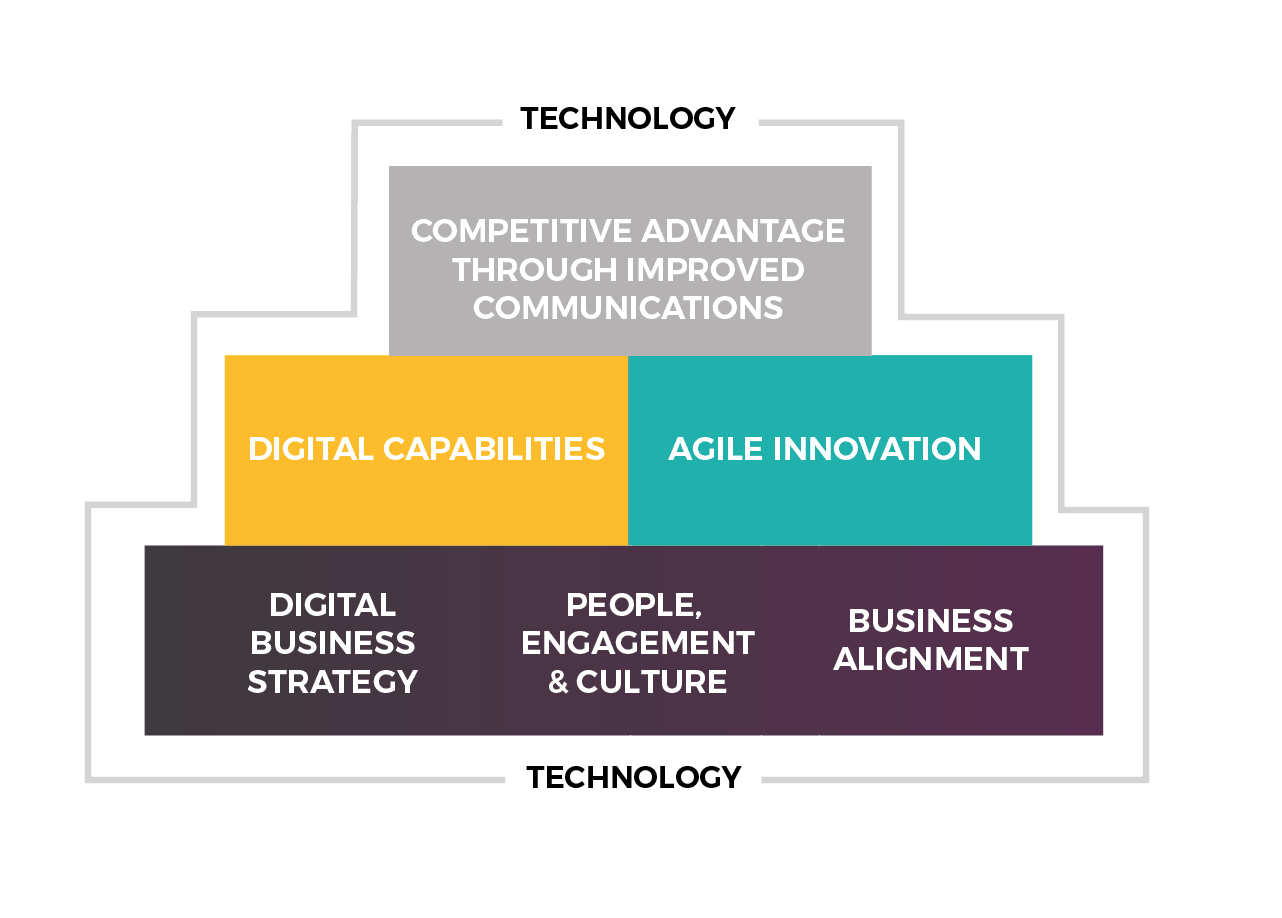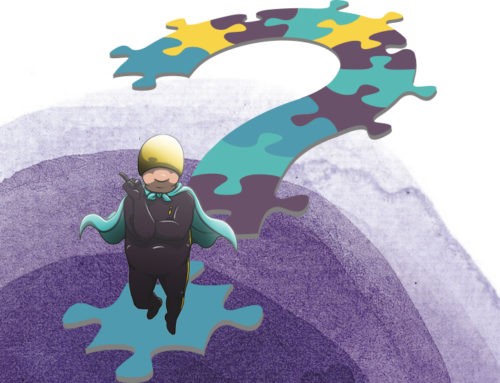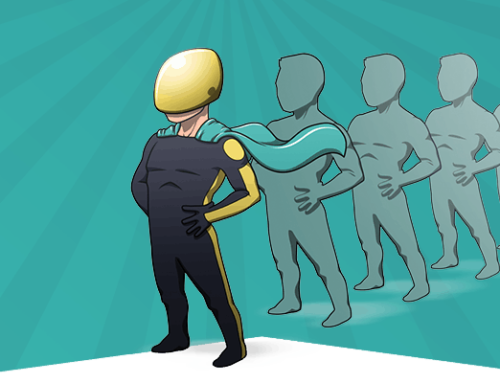For how-to guides, videos and more information on how to use our framework, visit our Digital Transformation Framework page.
No industry is safe from the digital age – we’ve seen disruption happen to those we’d least expect as well to as those who could see it coming. Whether it’s been due to a new market entrant or a competitor two or three big steps ahead of the game, we think it’s fair to say no industry is safe. The old adage applies, ‘’it will either be done by you or it will be done to you.’’
There are two identifiable ways in which businesses respond to the digital age. There are those who start to “digitise” their services; they create e-commerce stores, beautiful websites and smartphone apps and move their forms and processes to the cloud. Then there are those who are weaving the threads of the digital world through the very foundations of their leadership, strategy and thinking. It is this type of approach which we refer to as Digital Transformation. (Watch this video on “What Is Digital Transformation?“)
A limited number of organisations have introduced a Digital Transformation Programme to ensure they transform their strategic thinking and reimagine their business to meet customer needs better than ever before. In a recent global survey carried out by Loudhouse to determine if ”businesses are really digitally transforming or living in denial” their findings indicated that:
– 96% of organisations see digital transformation as important or critical
– 62% say their organisations are in denial about the need to transform digitally.
– 86% say they have 2 years to make inroads before suffering financial or competitive consequences.
The process of Digital Transformation requires organisations to challenge their core assumptions, to think differently about every aspect of their strategy, culture, structure, systems and processes and above all their customers.
Digital Transformation is a complicated journey, one which requires a structured framework to ensure the right questions are being addressed, the right data is being accessed and analysed, and that a culture is being developed to allow the business or organisation to flourish.
A framework is defined “as a structure with parts that fit together, join together and work together.” Well, we have our own Digital Transformation Framework which we use with our customers, and it looks and works as follows:

Notice how technology is not one of the building blocks, but it surrounds them? Technology is often assumed to be the driver of Digital Transformation but this is not the case. Each of these blocks are required for Digital Transformation. Technology is the means by which the process is supported and delivered. If we were using the analogy of building a house, technology is the plumbing and electricity. The outcome we are working towards is a warm and bright home with all our mod cons.
Digital Transformation starts with the Digital Business Strategy, which you can discover more about by following the link. In order to execute the strategy, the organisational culture needs to be aligned with the business and it’s objectives. Once these areas have been addressed the project can move to the next layer – Digital Capabilities & Agile Innovation.
Let’s start with Digital Capabilities. It sounds like you need to become tech savvy, know how to use the latest software and become an expert in Google Analytics – but that’s not the case. We are referring to the capabilities required to survive and thrive in the digital age. This means being able to develop a strategy that will create competitive advantage, it means understanding data and how to use it to inform our decision making, it means understanding how to improve our communications and being able to realign our business processes to achieve our strategic outcomes. Data is the key to improved decision making, innovation and communications. These are the capabilities our leaders need in order to guide our organisations through Digital Transformation.
Agile innovation, or the concept of being “lean” in how we develop products and services, is about creating a culture where minimum viable products (MVPs) are put to market to test quickly, to gather data, to learn from their success and failures in order to create something better next time. This is a continuous process that should involve a transparent scoring system, clear communication and support for all outcomes, regardless of their success.
You can find this in more detail on our Digital Transformation Framework page. However, if you have a question or a thought you would like to share, we’d love to hear from you – set up a time to chat with us or simply drop us a line through our contact page.


